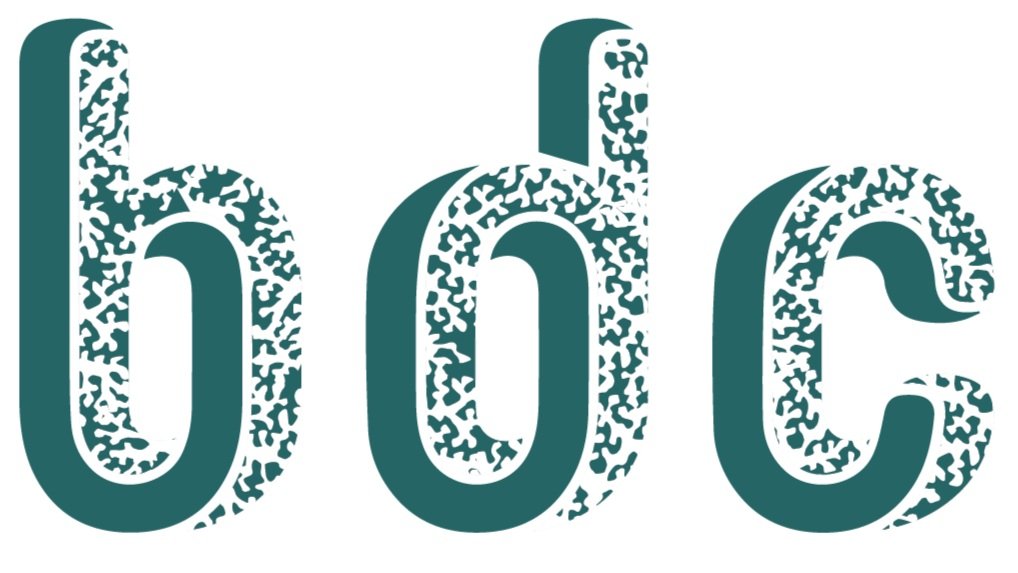Welcome Letter from BDC’s Executive Director
Dear Friends,
Seven years ago, I dreamed that by bringing students together with an interdisciplinary group of artists, designers, and biologists, we’d start meaningful conversations about the future of biotechnology. In my mind, the projects they’d produce would be largely theoretical—fodder for debate. They’d be thought experiments to help identify desirable and undesirable futures. My dream has had to evolve.
I sometimes joke that BDC participants “break” our program every year. That’s certainly true in regard to numbers: this year, 56 classrooms joined us, breaking our self-imposed 50-classroom cap. It’s also true in regard to my original dream: in recent years I’ve had to rethink our whole purpose.
Next month, the winners of the Glass Microbe from the first Biodesign Challenge will open a new facility in North Carolina. It will be the next phase for their startup. The AlgiKnit team arrived at the first BDC Summit with the goal of revolutionizing the fashion industry by producing clothes from algae. The swatch they had made was crude. Actually, it looked like wet ramen. But the judges were impressed—after all, the students had made a tangible material when we’d solely expected ideas. Last week, I had the opportunity to see AlgiKnit’s latest prototype, and it’s a spool of real thread!
I’m convinced that the ambitions of our students and the realities of the moment are converging. AlgiKnit had set a precedent, and a slew of BDC startups followed: Olombria, Tomtex, and Werewool are only a few.
BDC is not and never will be a startup competition. As long as projects are original, creative, and well considered, we support our students’ goals and help whenever we can. But I’d be blithe if I didn’t see that BDC has an opportunity to impact industry today.
For the first time, major brands have begun to look to our community for fresh ideas, new hires, and new sets of ethics. That’s one reason why we partnered with Google this past fall to create the first-ever Biodesign Sprint. The Sprint serves as a counterpart to our flagship Challenge.
While the Challenge asks students to explore the breadth of their imaginations, to speculate, and to offer critiques, the Sprint invites both students and the wider biodesign community to ideate on design briefs we’ve developed together with corporate partners. On Friday, we’ll announce our partner for this coming October’s Sprint. I know you’ll be excited!
As I reflect on seven years of BDC, I see that the role of our organization is changing, our community is growing, and industry is noticing. We will continue to balance projects that speculate and critique with those that solve. We continue to believe that these approaches belong side by side. Together they deepen the conversations we need to continue, enrich the projects that may one day become products, and most importantly, they prepare our students to be tomorrow’s thought leaders.
I have a lot of people to thank for this year’s Challenge: firstly, my thanks goes to the judges who will be reviewing the projects over this week. It’s always a great pleasure to work with these leaders in their respective fields. Thank you to the instructors who are always fantastic. And of course, thank you to the students who are the reason we all come together.
A big thank you goes to our sponsors, particularly Ginkgo Bioworks. Ginkgo has been a BDC supporter since our first year, and Ginkgo’s Creative Director Christina Agapakis served as our Board Vice President for three years. The Ginkgo Prize for Biological Futures is a testament to a shared commitment to the value of dreaming.
A huge thank you goes to Science Sandbox, particularly Ivvet Modinou and John Tracey, who have encouraged us and continued to be our champions through the trials of the pandemic. The foundation’s generosity is one of the reasons BDC continued to make strides during these last years.
Before I close, I want to commemorate Tris Yasay who passed away on May 25th. Tris was a freshman at University of California, Davis and a student in Christina Cogdell’s biodesign classroom. There are no words to express the tragedy of her passing. There are, however, words to celebrate her life.
Christina told me, “The last time I was with her, we were making algae-based foam under the hood, and it was funny because nothing went right. Disappointed at our “fail”, we found ourselves laughing together simultaneously. She was quiet, kind, and had a way of showing empathy, humor, and engagement with her eyes that was unlike anything I'd ever seen.” Tris’s death is a loss to our community. Our condolences go to her classmates, teachers, friends, and family.
In recognition of Tris and the enormous value of life, I end this note with great love for this community.
Yours,
Daniel Grushkin
Executive Director
Biodesign Challenge
June 2022
